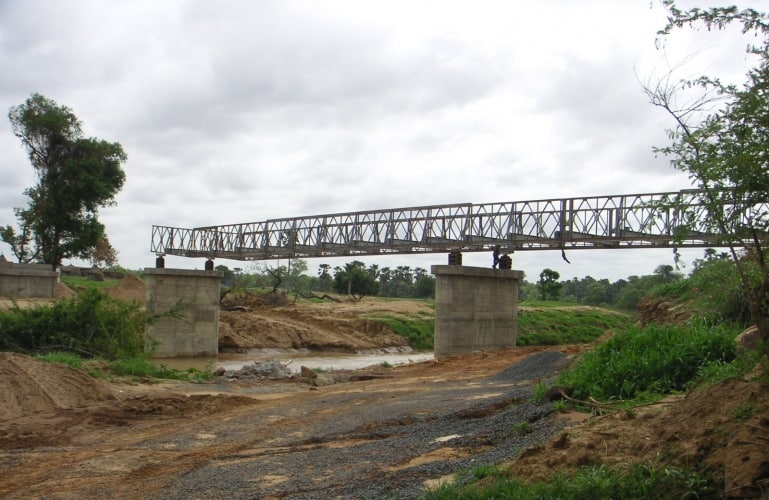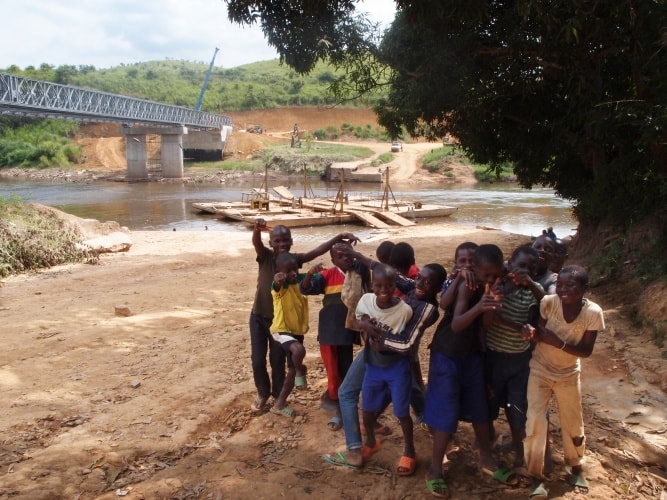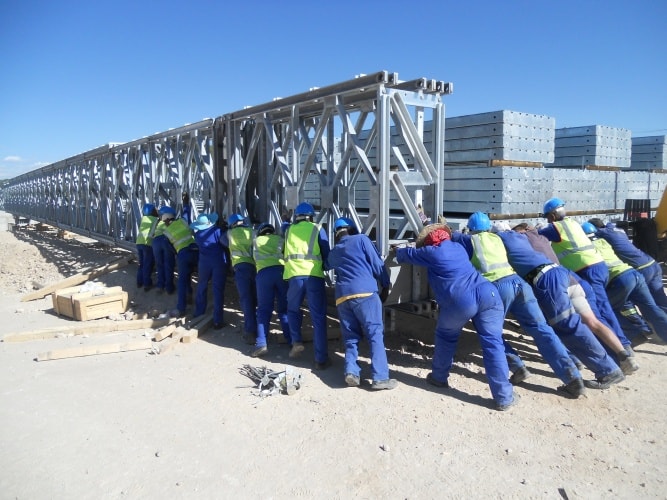 Former Royal Engineer Alan Pearson, who now works for Mabey, reflects on his time helping communities with the Bailey Bridge's modern-day successors.
Former Royal Engineer Alan Pearson, who now works for Mabey, reflects on his time helping communities with the Bailey Bridge's modern-day successors.

My attachment to the Bailey Bridge started during my career as a Royal Engineer. My belief then and to this day was that there is not a single better piece of engineering.
Invented by Donald Bailey during the Second World War, the bridge could be easily assembled in a wide range of configurations. I was aware of the important role it played in winning World War II, and its simple design meant it was still doing an effective job for the military decades later. But now, as we approach the 75th anniversary of the Bailey, I want to make sure its contribution to civilian life is similarly celebrated.
When I left the Army more than 22 years ago, I started working with Mabey – manufacturer of the lighter, stronger, modern successors to the original Bailey such as the Super Bailey, Mabey Universal, Compact 200 and the Logistic Support Bridge (LSB). The benefits of the Bailey Bridge outside the military setting had always been obvious to me – it can be rapidly built and assembled by hand, keeping costs for governments, local authorities and aid workers down to a minimum. But it wasn’t until I started travelling around the world to train diverse communities in how to build these modular steel bridges that I could see the dramatic impact they are having on the lives of real people – from those living in major cities, to indigenous communities in underdeveloped countries.

I’ve now visited 94 different countries with Mabey, leading teams of local people to build these life-changing bridges. I might be there because natural disasters have brought down existing structures, or perhaps as part of wider country efforts to improve basic infrastructure. Regardless of the circumstances, I’ve seen communities be completely transformed. Here are the three biggest impacts as I see them:
New connections open new revenue streams
As soon as local businessmen realise there’s going to be a new bridge, they smell money! When we arrived in Congo in 2015 I heard about a regular ferry taking tourists from one side of the river to another, but in the rainy season this was dangerous, and in high season there was rarely enough water. Our new 130-metre bridge was going to change this and local people couldn’t believe it would take us just 35 days to install – they had thought we would be there for months! Businessmen sped up their plans to open new restaurants and petrol stations to serve tourists and passers-by, and a new community was established before our very eyes.
Using local labour boosts communities
The beauty of the Bailey successors is that they are so easy to construct, you really only need one experienced trainer and a willing workforce of local people. Back in 2007, the state of Kashmir was trying to recover from a catastrophic earthquake which killed 50,000 people. As part of aid efforts, the British government supplied around thirty bridges and I headed over to train a team of local engineers and tradesmen to build them. One of the proudest moments of my career was returning years later to hear that this team had gone on to train another 20 people, who had trained another 20 people to build more and more bridges. In the worst circumstances imaginable, they learned new skills and were spreading their knowledge. It’s evident that when local people do the work, they take greater ownership of the bridge - and of course they get paid, so more money is ploughed back into the local community.

Bridges really do save lives
The biggest impact of a new bridge is, without doubt, ensuring people can get from A to B as safely as possible. It’s something we might take for granted in developed countries, but there are still too many people around the world risking their lives to get access to vital amenities. When I arrived in Mali in 1997, local people told me that each year 20-40 people died crossing the Bakoye river. It was shocking to see vehicles which had been washed away, and hear stories about people taking the treacherous journey by canoe or by boat. As soon as local people realised we were building a safe way to cross, they immediately stopped attempting to reach the other side and simply camped out until we were finished. The journey was so dangerous it was worth holding on for.
As the 75th anniversary of the Bailey Bridge draws closer, it gives me great pleasure to highlight how it has enabled faster, safer and more efficient access across a range of challenging locations. It is a true feat of engineering, in both military and civilian settings.





Nanogenerator consumes CO2 to generate electricity
Whoopee, they've solved how to keep a light on but not a lot else.